Movie Review – Fear Street Part Three: 1666
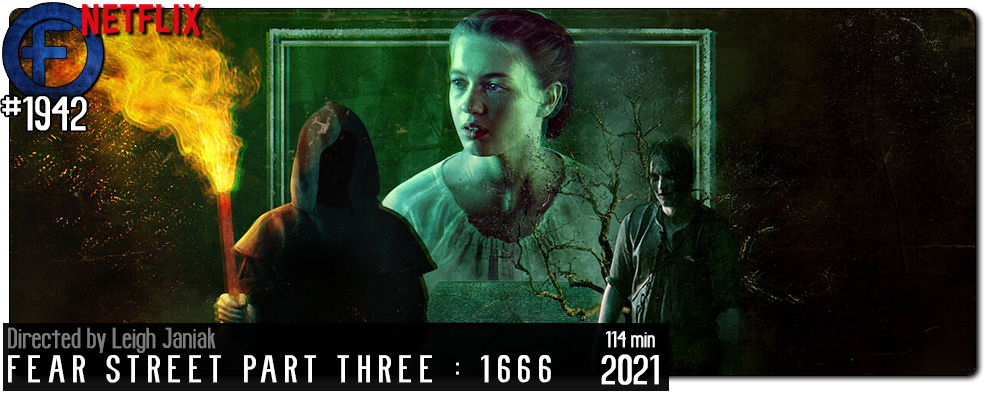
Principal Cast : Kiana Madeira, Ashley Zuckerman, Gillian Jacobs, Olivia Scott Welch, Benjamin Flores Jr, Darrell Britt-Gibson, Fred Hechinger, Julia Rehwald, Emily Rudd, McCabe Slye, Jordana Spiro, Jordyn DiNatale, Jeremy Ford, Randy Havens, Michael Chandler, Matthew Zuk, Lacey Camp, Charlene Amoia, Mark Ashworth, Ryan Simpkins, Emily Brobst, Elizabeth Scopel.
Synopsis: The origins of Sarah Fier’s curse are finally revealed as history comes full circle on a night that changes the lives of Shadysiders forever.
********
Turn off the lights, crank up the volume, settle back in the couch with popcorn and a soda and prepare to be utterly thrilled by the third and final instalment of Fear Street, a trilogy of horror films based on the books by RL Stein (Goosebumps) and directed by Leigh Janiak (Honeymoon). Part One: 1994 is followed by Part Two: 1978 and the finale, Part Three: 1666, and all films are now available to watch on Netflix.
With the first two films in this horror trilogy setting us up for a gruesome and revelatory killing spree, you’d be forgiven for wondering exactly how the third instalment, subtitled Part Three: 1666, could transplant us back several centuries and still continue the story the previous films had delivered. That it achieves such a feat, and excels in doing so, is something director Leigh Janiak will be roundly praised for, with this grand finale going for broke with crazy horror tropes, a fresh lick of paint atop its Scooby Doo man-in-the-mask narrative and dystopian pilgrim horror themes. Again, Kiana Maderia makes for a compelling heroine to root for, abetted by a scatological roster of supporting characters carried over from previous films, and the opening two thirds of 1666, in which we’re given an extended flashback exposition dump involving players from the earlier films portraying their 15th century counterparts, are some truly terrifying moments of filmmaking. Whisking elements of The Crucible, Scream, I Know What You Did Last Summer and the likes of Robert Eggers’ The Witch and Alejandro Amenabar’s The Others together into a flambé of blood and neon horror, Part Three 1666 is a magnificently orgiastic genre piece that succeeds superbly despite plunging value in returning to the first film’s aesthetic and a stuttering narrative throughline.

Through a protracted flashback, Deena (Kiana Madeira) is given a vision of events in 1666 that occurred in the town of Union, the precursor to Shadyside and Sunnyvale, in which local resident Sarah Feir was declared a witch and hung from a tree. Sarah/Deena lives with her father George (Randy Havens) and brother Henry (Benjamin Flores Jr, reprising the sibling role from previous films) and is infatuated with local girl Hannah Miller (Olivia Scott Welch), much to the chagrin of town psycho Mad Thomas (McCable Slye), who decrees that Sarah has evil within her. Sarah is friends with recently widowed Solomon Goode (Ashley Zukerman), who lives adjacent to the town and also not far from the local widow (Jordana Spiro), the latter of whom appears to practice black magic. Unwittingly, Sarah Feir is accused of witchcraft after Pastor Miller (Michael Chandler) goes crazy and murders the rest of the village’s children after being possessed. The girl flees, whilst her accused lover Hannah is sentenced to be hanged as an accessory; Sarah attempts to rescue her, but finds herself beneath Solomon’s cabin where she learns that is was he who cursed the town, and brought the Devil to play in Union. The secret of Solomon Goode brings Deena out of her vision and back to 1994, where her girlfriend Sam (again, Olivia Scott Welch) is still possessed by the ghost of Sarah Feir. She realises that in order to save both Shadyside and Sunnyvale, and remove the witch’s curse, they will have to do the unthinkable and take down a half-dozen resurrected Shadyside killers as well as the one person keeping the curse alive.
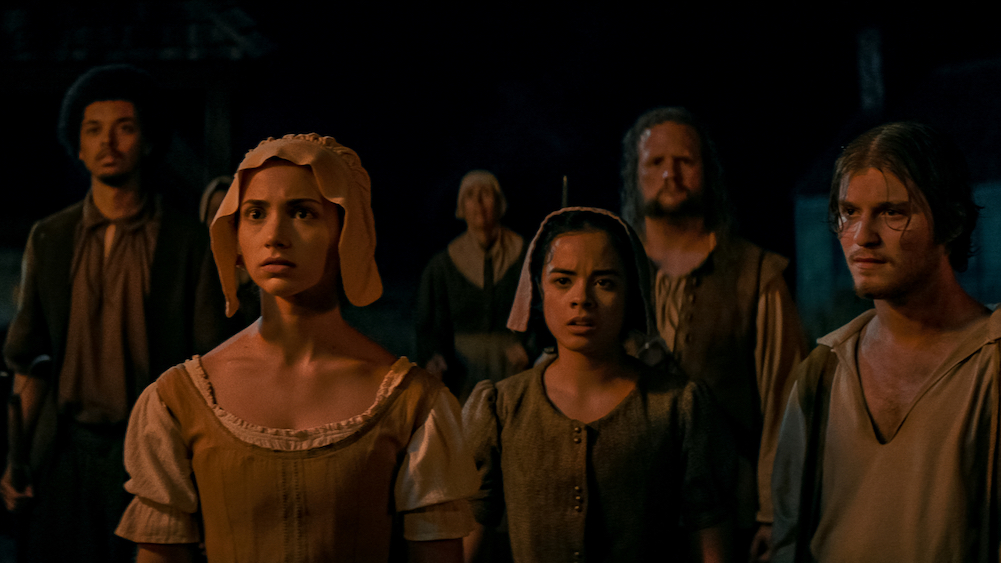
The first half of Fear Street Part Three: 1666 is fantastic. A truly gothic period horror piece, set within the fervent religious hysteria of colonial America, free of technological burdens and ripe for simple survival and brown-hued terror, the finale of this trilogy kicks off with a remarkably effective flashback sequence that lasts well into the film’s second hour. The destitute angst of isolation and societal normality rife with suspicion of the unknown – key aspects to life in the day – accentuate the feelings of oppressive despair and fear as Sarah Feir’s unfortunate fate is finally revealed as the tragedy it is, while the hitherto unexpected plot twist in a character’s motivation actually blindsided me. The second half of the film, which climaxes the storyline started in the first film and set in “the present” of 1994, is not quite up to the same level and has a few stumbles before it gets to the end, but is still a worthy conclusion to a mystery that has no business being as good as it is.
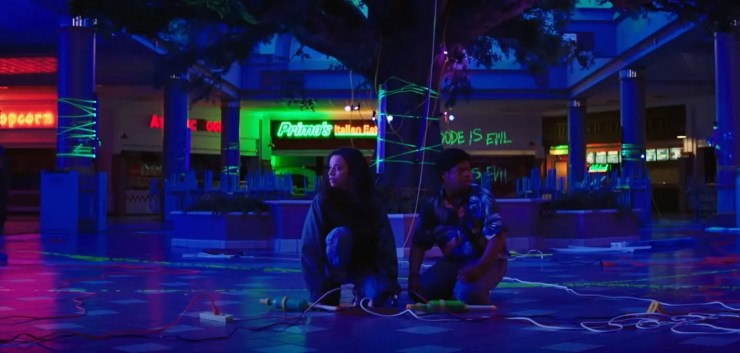
A pleasant surprise in Part Three: 1666 is that for the period of the film set in 1666 Leigh Janiak populates the various Union denizens with actors who play a part in the previous two films. Cast as ancestors or their modern counterparts, seeing actors from both 1994 and the 1978 film – particularly Sadie Sink and Emily Rudd, as well as McCabe Slye – appearing as various early American settlers provided a sense of familiarity to proceedings; had the film introduced yet another slew of new faces to the mix, it would have reduced the brevity with which Janiak could get straight into the story of the third film’s exposition as the viewer would have been trying to work out who was who. This filmmaking technique is a long-time shorthand way of maintaining a link with a secondary storyline and seeming cool about doing so, and I enjoyed how each of the new characters’ representative was somehow linked, even if only tenuously, to their contemporary version. Kiana Madeira once more holds the film on her own, portraying Deena with ferocious resolve and notable strength even when all seems hopeless. The film doesn’t try and avoid thrusting the thoughts and motivations of Deena into the 1666 Sarah Feir even if that aspect seems counterintuitive (a problem I often had with the way Scott Bakula’s character behaved in the early 90’s television show Quantum Leap) and the experiences and revelations Deena has in her vision of the past are truly remarkable in their familiarity juxtaposed with current social mores.
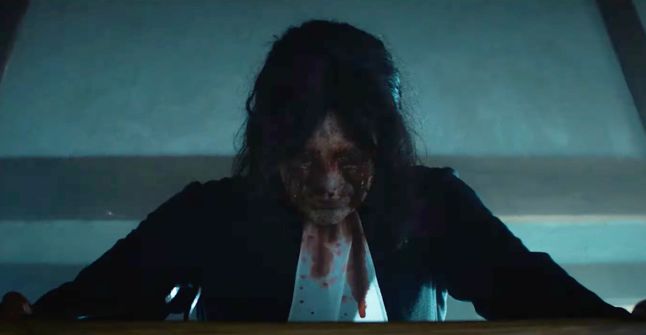
The horror of ostracization and groupthink evil play a pretty big part of the film’s period-set storyline. The evil of homosexuality was a perverse and omnipresent sin according to religious teachings and with a herd mentality driving many in Union to declare Sarah a witch without actual cause (and even when it’s proven she is innocent… well…too bad) the inbuilt sense of terror almost self-generates once the secret dalliance leaks out. The use of dark magic set against the theologically illiterate and horrifyingly biased townsfolk coming with pitchforks and torches to kill an innocent girl sends a shiver down the spine for its precision strikes on today’s viewers – not too long ago even this century people marched through American streets with similar iconography to hand. Of course, within the bounds of a horror film everything seems scarier, and the 1666 segments of the film are dark in both tone and production. The dull grey of Union’s dirt streets and splintery wood cabin homes give way to the brown and black torchlit night-time sequences, all beautifully haunting and thrillingly scary for a genre fan. Janiak, together with DP Caleb Heymann, craft some chilling and skin-prickling scares in the 1666 sequences of the film, with both jump-scare shadows and jittery, Dutch-angle framed horror tropes brought superbly to bear on some of the film’s creepiest eerie scenes. A sequence with the possessed Pastor Miller in the church, having carved the eyes out of the town’s children, is an all-timer of ghastly genre effectiveness and sits with me still as one of the trilogy’s most potent moments.
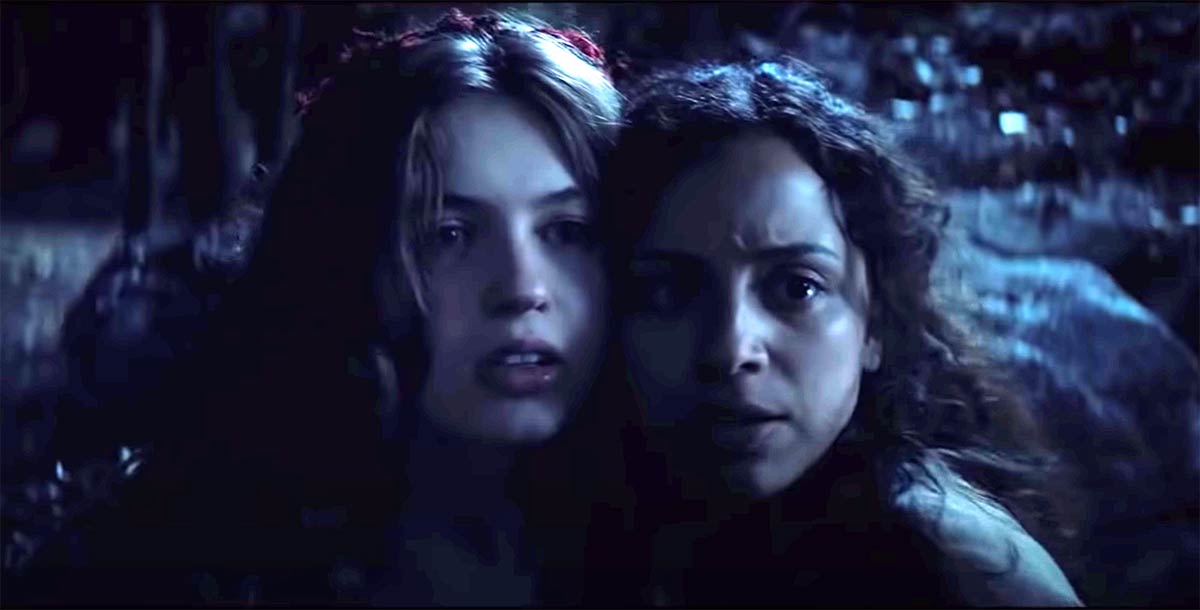
Once the film reverts back to its 1994 setting, however, the tone changes and things feel a little less prestige. The first film’s 1994-set aesthetic comes back into frame and the transition from earthy, humanist horror to neon-lit rock music Scream homage isn’t one that works well at first. But Janiak pulls it together in the end, thanks largely to Madeira’s gung-ho performance and the reappearance of mall janitor Martin (Darrell Britt-Gibson, playing the “token black guy” in a horror movie, despite Benjamin Flores Jr also being a black actor alongside him) as one of the gang who plan to take down the various ghosts and ghouls of Shadyside’s long-running murderous curse. The latter third of the film ties up the various loose ends and plot twists, but although setting it inside a shopping mall might feel “of the period” it kinda feels like a letdown compared to the brilliance of the previous two films. That’s not to say the finale of Part Three: 1666 is bad, because it’s anything but; comparatively, however, the laughably semi-serious ending feels a touch too cornball for my liking, with several characters making laughable decisions to service the plot rather than themselves, and the central villain meeting an end so silly and so “meh” after all that’s preceded it it actually angered me.
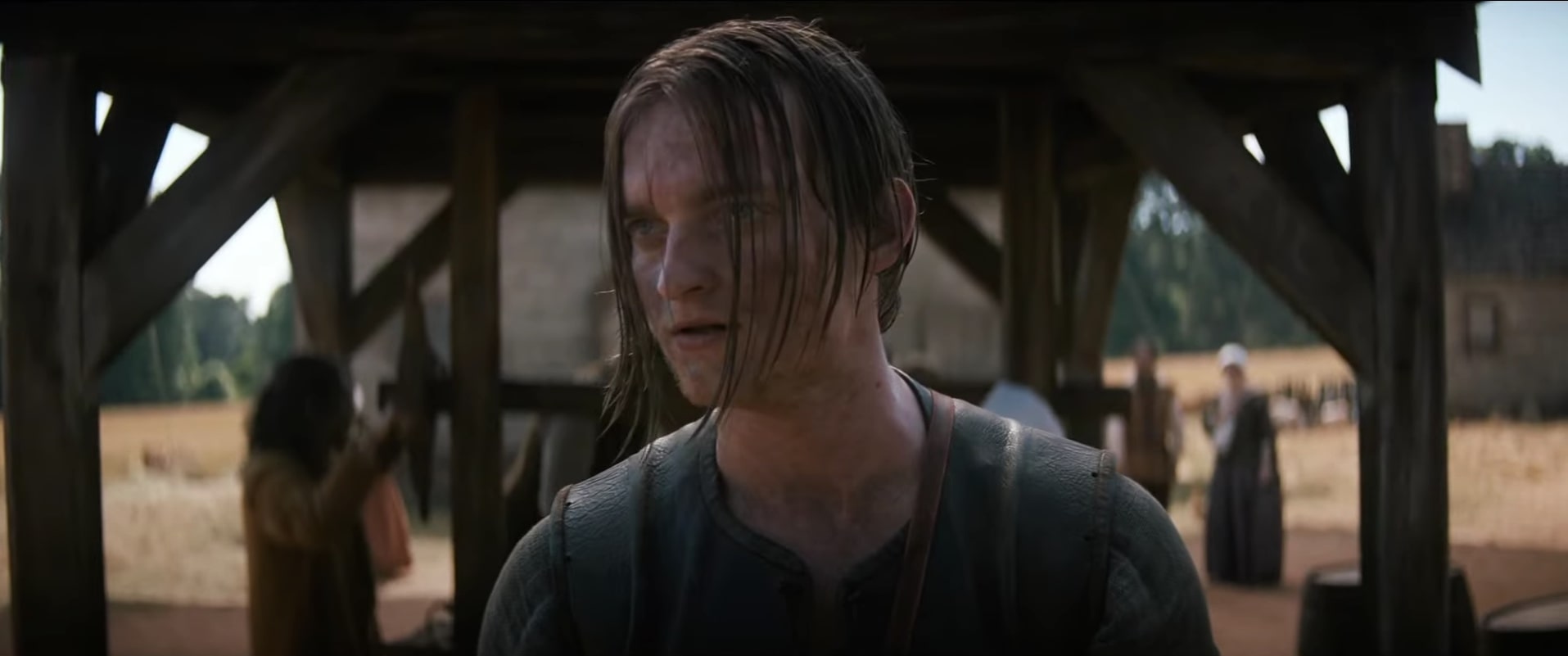
As with the previous films, the cast all do solid work, particularly Kiana Madiera, who shoulders the film’s emotional weight all on her own, and carries the trilogy on her relatively thin shoulders. Ashley Zuckerman plays Sherriff Goode (as well as Solomon Goode) well, shifting from friend to foe without so much as batting an eye, while Gillian Jacobs, Olivia Scott Welch and Benjamin Flores have less to do here than previously but still acquit themselves well. Seeing Julia Rehwald and Fred Hechinger again (both were fatally despatched in Part One: 1994) was cool, and Lacey Camp, again in a small role as Hannah/Sam’s cruel and self-centred mother, positively shines. The film once more brings us slasher horror in the form of Shadyside’s various killers – the Camp Nightwing axe-wielding killer, the nasty Ruby Lane, baseball bat wielding murder-child, et al – and uses them well in parts, although it has to be said the sight of them all slugging it out with each other in the middle of a dingy mall is unintentionally one of the trilogy’s silliest moments. Moments of silliness aside, Part Three: 1666 is still quite the thrill-ride, and arguably the most pure horror film of the entire trilogy. It’s certainly the most effective with sinister, supernatural chills getting under my skin, I can tell you.
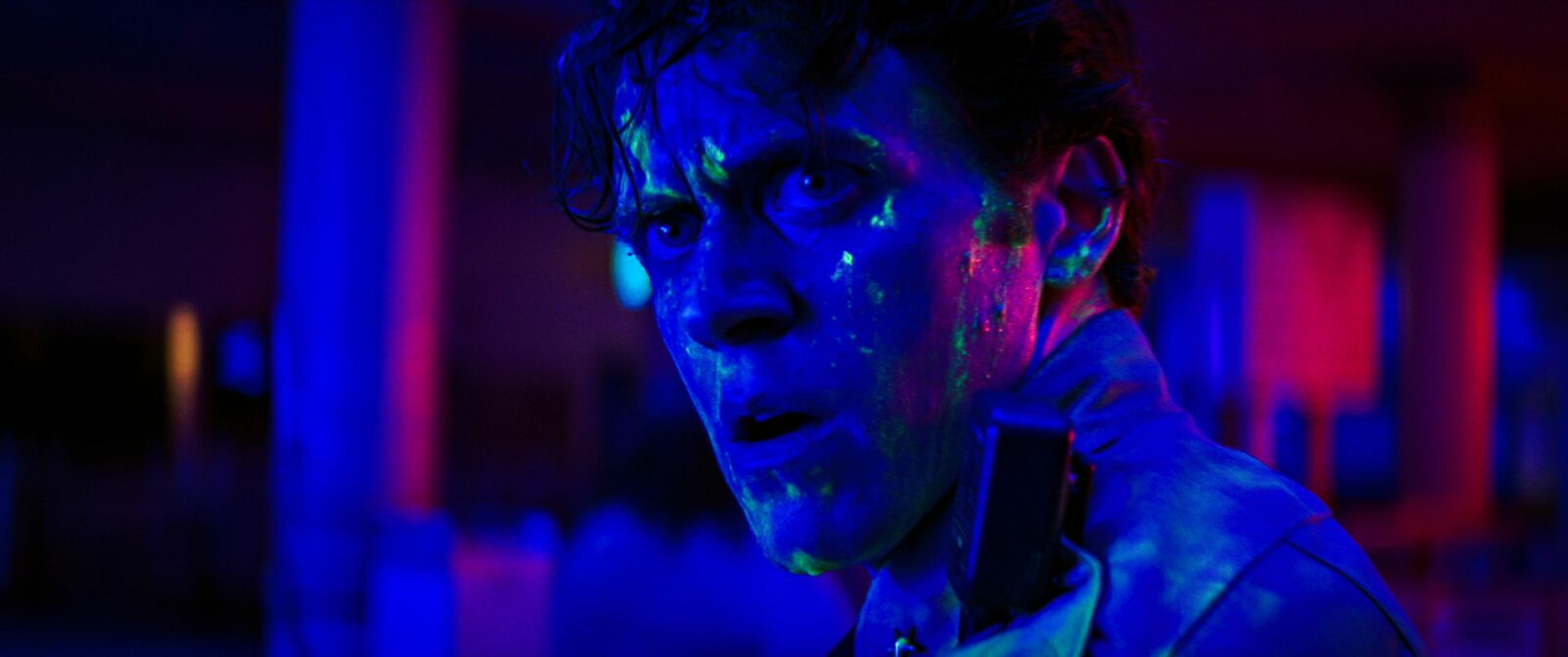
Fear Street Part Three: 1666 resolves a number of ongoing plot threads, continues to deliver solid needle-drop music choices, contains plentiful blood, gore and horror tropes to spare, and gives the audience that which it asks for most of these kinds of movies: to be entertained. While it does stumble a touch in the final act, the majority of the film is an absolute blast of period-era terror, being superbly mounted and directed, to say nothing of the conviction of Kiana Madeira’s strong performance as Deena. I would argue that watching all three films within a short time between each lends itself to catching all the in-film references and gags, and like Lord Of The Rings is actually a single self-contained story over three films rather than three separate individual stories; the characters have weight and realism to them, the homage to the various time periods and horror clichés work well, and Leigh Janiak brings a truly unsettling visual aesthetic to Fear Street – all three movies – that might not have worked had it swapped out directors at any point (I’m looking at you, Star Wars Sequel Trilogy). As a concluding film in an otherwise remarkable horror trilogy, I think Fear Street Part Three: 1666 absolutely knocks it out of the park. Here’s hoping for some more.
